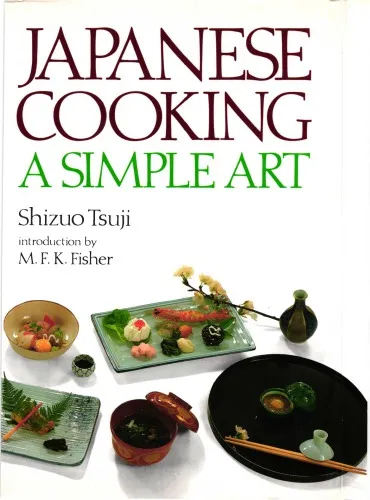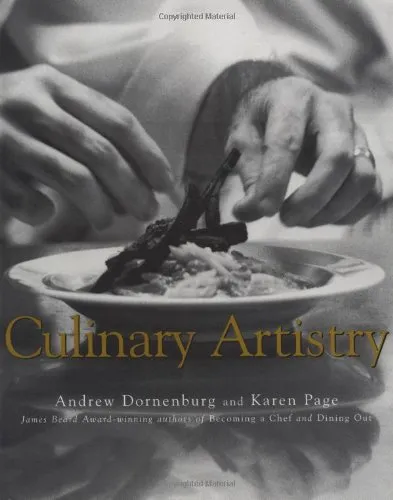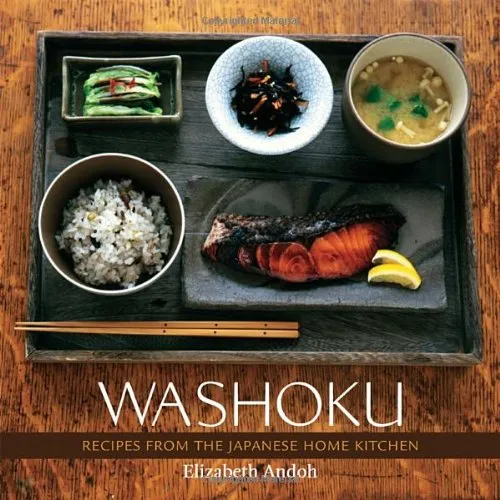Japanese Cooking: A Simple Art
4.8
Reviews from our users

You Can Ask your questions from this book's AI after Login
Each download or ask from book AI costs 2 points. To earn more free points, please visit the Points Guide Page and complete some valuable actions.Related Refrences:
Introduction to Japanese Cooking: A Simple Art
Japanese Cooking: A Simple Art is widely regarded as one of the most authoritative guides to traditional Japanese cuisine ever written. Authored by Shizuo Tsuji, this masterpiece offers an extensive exploration of Japanese culinary traditions, philosophies, and techniques, making it not only a cookbook but also an essential cultural text. First published in 1980, this work has transcended its role as a mere collection of recipes and has become a definitive reference for anyone seeking to understand and master the art of Japanese cooking.
Combining clarity, depth, and attention to detail, Japanese Cooking: A Simple Art opens the doors to the rich and harmonious world of Japanese gastronomy. It serves as a celebration of the simplicity, aesthetics, and balance that define Japanese food, while also functioning as a practical guide for professionals, home cooks, and food enthusiasts. The book has stood the test of time, continuing to inspire chefs and readers around the globe.
Detailed Summary of the Book
The book is meticulously structured to introduce readers to the foundational principles of Japanese cuisine while guiding them through recipes, techniques, and philosophies. Shizuo Tsuji begins with an in-depth discussion of the fundamental concepts that distinguish Japanese cooking, such as the focus on seasonality, respect for ingredients, and a culinary artistry that emphasizes simplicity and natural flavors. From there, he provides insights into the cultural history and the influence of Buddhism, Shintoism, and seasonal festivals on the evolution of Japanese food traditions.
A significant portion of the book is dedicated to explaining essential ingredients such as soy sauce, miso, dashi, and rice, along with their roles in Japanese cooking. Tsuji also covers traditional techniques like sashimi preparation, sushi rolling, tempura frying, and the art of noodle making. Each recipe is detailed and accompanied by a discussion of its cultural significance, historical roots, and variations.
Beyond recipes, the book delves into the subtleties of presentation and balance, explaining how the aesthetics of plating and seasonal arrangements elevate the dining experience. Tsuji integrates these concepts with thought-provoking writing on the deeper philosophies of Japanese cuisine, making the book suitable not only for budding chefs but also for anyone interested in the Japanese way of life.
Key Takeaways
- The cornerstone of Japanese cooking is harmony—balancing flavors, textures, and aesthetics.
- High-quality, seasonal ingredients are essential to achieving authentic Japanese flavors.
- Techniques such as knife skills and dashi preparation form the backbone of Japanese culinary mastery.
- Presentation is as important as taste, with particular attention to seasonal themes and visual arrangement.
- Japanese cuisine is deeply intertwined with Japanese culture, philosophy, and history.
Famous Quotes from the Book
“Japanese cooking is, above all, a celebration of the aesthetic properties of food.”
“Simplicity, order, and balance are the ideals for which Japanese cooking strives.”
“True Japanese cooking begins and ends with the focus on quality ingredients.”
Why This Book Matters
Japanese Cooking: A Simple Art is more than just a cookbook; it is a window into the soul of Japan’s culinary heritage. As one of the first English-language texts to comprehensively catalogue traditional Japanese recipes and techniques, it bridges the gap between East and West, providing an accessible way for international audiences to connect with Japanese culture.
The book is praised for its combination of academic precision and approachable writing. Whether you are a seasoned chef refining your skills or a curious amateur exploring Japanese cuisine for the first time, Shizuo Tsuji’s seminal work offers inspiration and education in equal measure. It emphasizes not only the “how” of cooking but the “why,” guiding readers to appreciate the essence of Japanese food and respect its traditions.
Today, when global awareness of Japanese cuisine is higher than ever, this book remains a foundational text that continues to influence chefs, educators, and food enthusiasts worldwide. Its message—that cooking is an art that reflects culture, history, and philosophy—is timeless, making it an indispensable resource for anyone who values food as an expression of life.
Free Direct Download
You Can Download this book after Login
Accessing books through legal platforms and public libraries not only supports the rights of authors and publishers but also contributes to the sustainability of reading culture. Before downloading, please take a moment to consider these options.
Find this book on other platforms:
WorldCat helps you find books in libraries worldwide.
See ratings, reviews, and discussions on Goodreads.
Find and buy rare or used books on AbeBooks.
1313
بازدید4.8
امتیاز0
نظر98%
رضایتReviews:
4.8
Based on 0 users review
Questions & Answers
Ask questions about this book or help others by answering
No questions yet. Be the first to ask!













